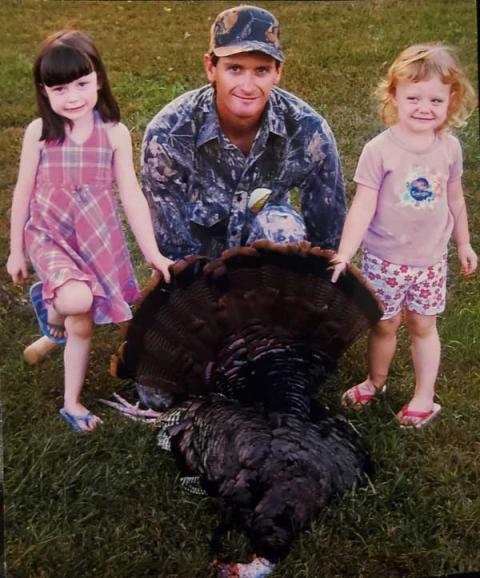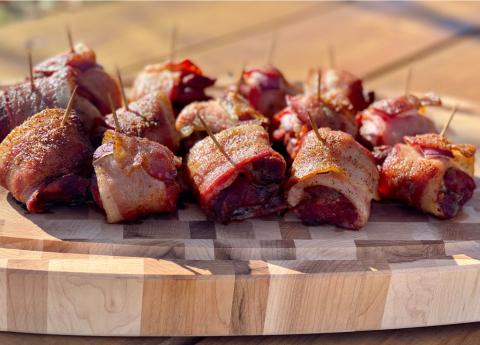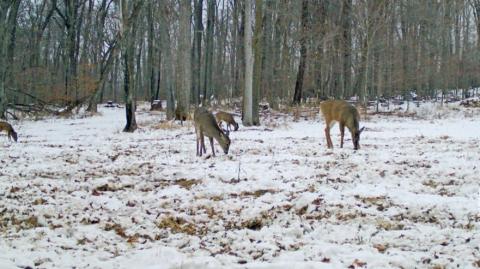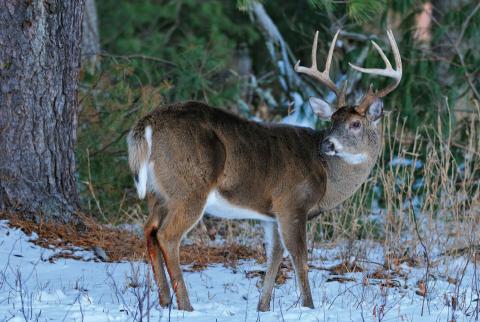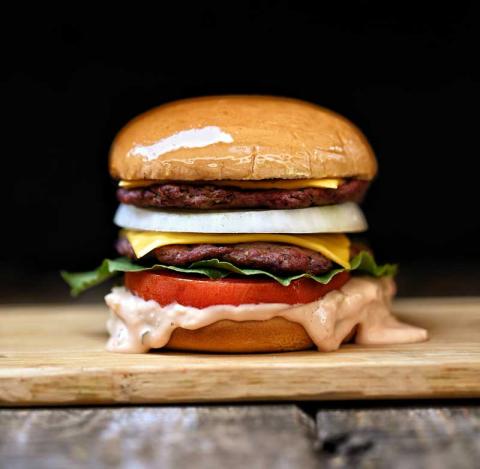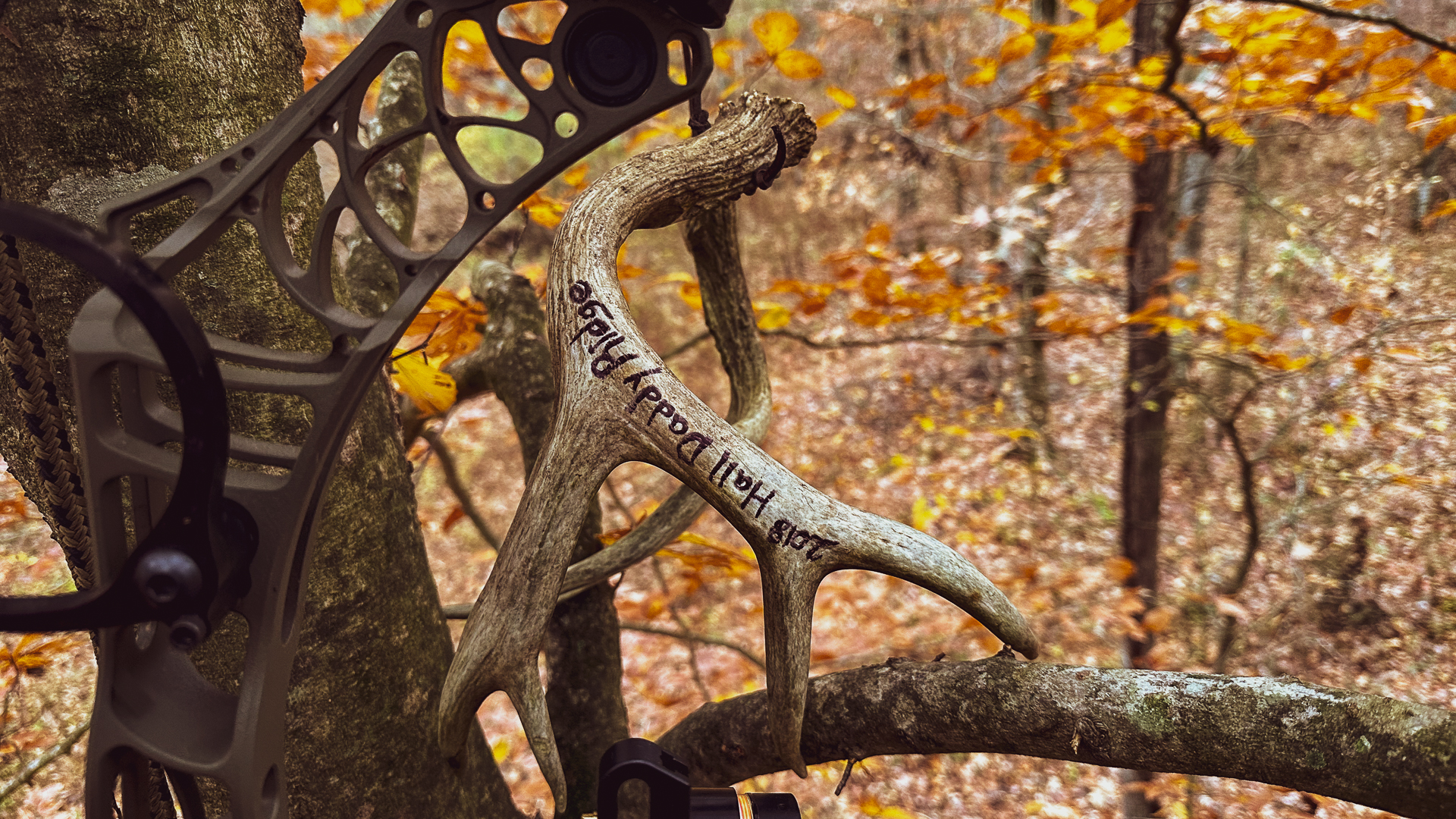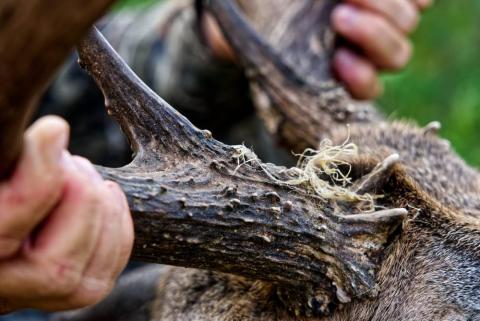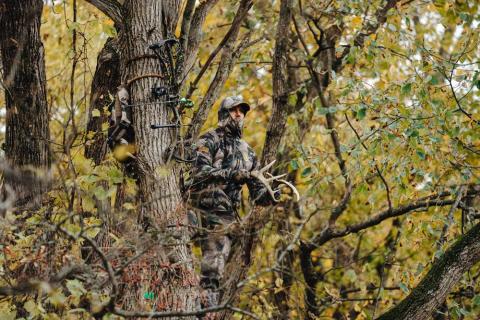Hunting with a deer decoy can be an exciting and rewarding way to deer hunt. Watching a big buck walk across a field and bow up to your decoy is nerve-racking. Still, some seasoned deer hunters are on the fence about using a deer decoy, but hunting deer with a decoy has proven to be a very effective tactic. The best deer decoy placed in the right location can produce a hunt of a lifetime and lead to a punched tag. There are many variables to consider when planning to purchase and hunt whitetails with a decoy.
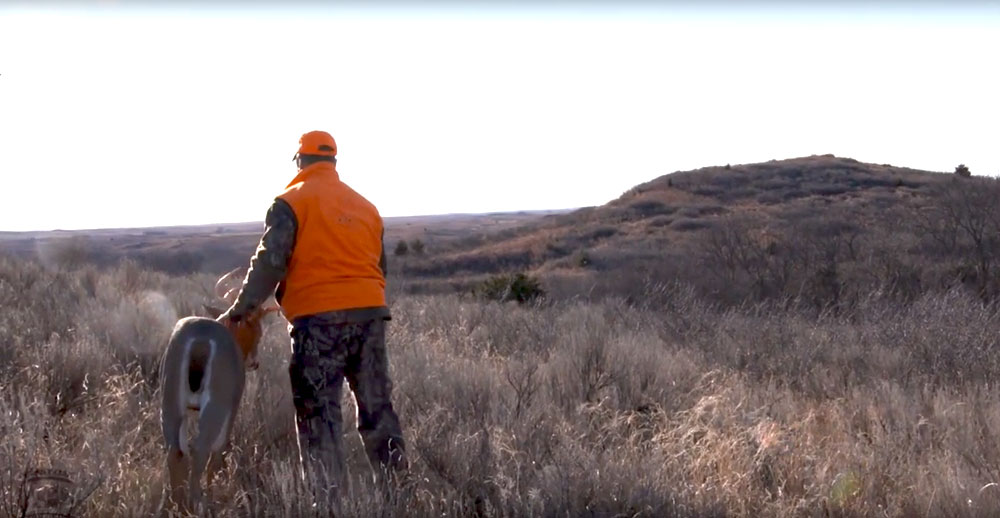
Deer Decoy Variables to Consider Are:
-
Best time to use a deer decoy
-
Doe decoy vs. buck decoy
-
Considerations for buying a deer decoy
-
Deer decoy placement
-
Visibility
-
Scent Control
-
Deer decoy scents for attraction and coverage
We asked Justin Eakins about his experience with deer decoys and how to use deer decoys for hunting deer. Justin is the owner of the Canadian River Hilton Hunting Lodge, located in Western, Oklahoma. Justin has been successfully guiding whitetail deer hunters for over 30 years. He is an expert on hunting deer with decoys. Here are seven of Eakins' best decoying tips for deer hunting.
1. Best Time to Use a Decoy
The best time to use decoys for deer hunting is pre-rut and rut. Two to three weeks before the rut or peak breeding hits in an area is a great time. During these weeks, bucks are starting to break up out of their bachelor groups as they begin to establish their home ranges. This specific phase of deer behavior varies throughout North America, so it is crucial to understand when peak breeding occurs in your area and use your decoy in the two to three weeks leading up to that time. For example, peak breeding throughout states like Iowa, Illinois and Missouri is usually around November 14.
Deer decoys are most effective during this time because it's when bucks are establishing their home ranges. With a significant increase in testosterone during this phase, bucks become more dominant and aggressive. A dominant buck won’t tolerate an intruder during the pre-rut or rut. If you have a hit-lister showing up on your game camera this time of year, a deer decoy can be just the thing to pull him in range.
2. Buck vs. Doe Decoy
I often get asked, “Should I use a buck decoy or doe decoy?” Over 30 years of guiding has taught me that if I have to leave camp with one decoy, I'm going to take a buck decoy every time. The reason I'm using a buck decoy in pre-rut and rut is to tap into the dominant nature of bucks. When a buck sees the posturing position of a buck decoy, the competitive nature of the live buck may take over his decision-making and cause him to try to fight the decoy to evict "the intruding buck" out of the area.
3. What Is the Best Decoy to Buy?
When you're hunting with a decoy and when choosing your decoy, if your decoy looks 90 percent real, I'm going to say you're going to get positive results 90 percent of the time. However, if you take your bow target out that may only have a 20 percent look of realism to it, you may get positive results 20 percent of the time. You may trick a few bucks, but you won't trick very many. The beautiful thing about a qualitative decoy is the durability of them. I've used them for years. If you want to pop the antlers off, you can pop them off and make a doe decoy out of it. During pre-rut and rut, I love the posturing position because it shows some dominance and makes deer want to come in when the decoy is in an aggressive posture. If you want to use it when it's not pre-rut and rut, the ears and the antlers are adjustable. In my opinion, Dave Smith decoys are as lifelike as deer decoys get. I have experienced the best results for myself and my clients while hunting deer with Dave Smith decoys. In addition to Dave Smith decoys, there are several other great brands out there.
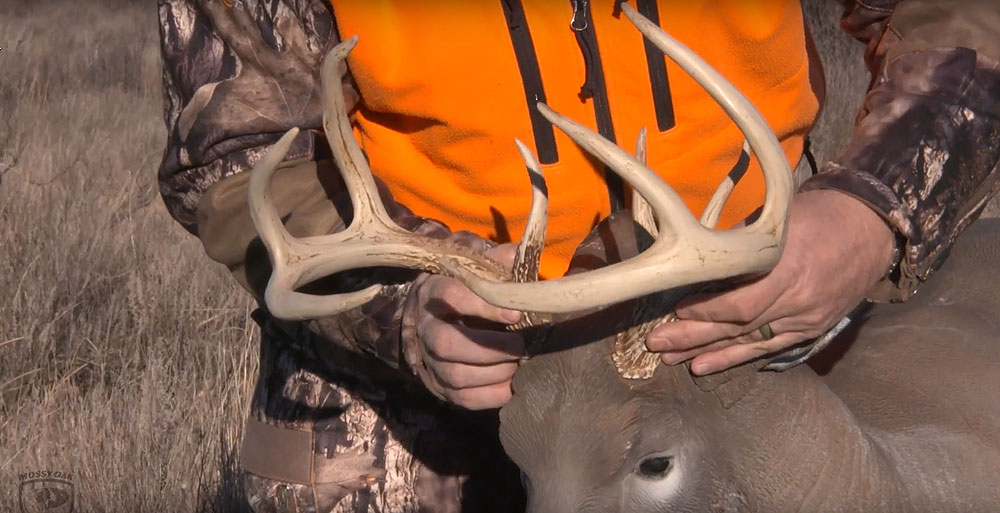
4. Decoy Placement
Decoy placement is a critical variable when hunting deer with decoys. You always want to make sure to place the decoy well within your effective shooting range, where you have a clear shot. So if you're right-handed and right down here is your shot area, it is essential to set up your decoy and your stand or blind in positions that conform to which hand you are as it relates to shooting your gun or bow. Many hunters think, "The deer are going to come right in and I’ll hit my decoy." Set your decoy in front of where you want your shot placement. Ninety percent of the time or better, a buck won't approach the front side of your decoy as one may think of how bucks position themselves when they fight.
The first thing a buck is going to try to do is cheap-shot the buck, or in this case, the decoy. If a buck can cheap-shot his threat and avoid a significant encounter, he's going to do so. Most often, a buck is going to circle, and he's going to flank the decoy's side. Setting a decoy quartering away from your position is best. This position allows you the opportunity to draw your bow or raise your rifle and get a shot off. That should give you a great opportunity at a broadside to quartering away shot without that buck focusing on you and your stand or blind.
Ensure there is plenty of room for a dominant buck to maneuver around the decoy. Poor positioning of a decoy will not allow the buck to move on the decoy and often prevents the hunter from having a clear shot. With a little planning, a properly placed decoy will lure a dominant buck within range and give a hunter a great angle for a lethal shot.
5. Visibility Is Key
I like to set my decoy in an area where it's very visual. The top priority when hunting with a decoy is for your prey to see it. Analyze the terrain around your setup and consider where deer are most likely to travel. Put yourself in the place of the deer and consider where they will most easily see your decoy. If you're hunting a field, make sure that your decoy is placed in the exact spot that maximizes its chances to be seen. If you're hunting a funnel, put the decoy in a place where the deer are most likely to end up while traveling the funnel.
Many hunters will keep the field cut low where they plan to deploy their decoy, especially if they are hunting a field with tall grass or sunflowers around the edge. It is also best if the decoy is not in direct line with the most likely angle of approach and your setup. Normally, the buck’s attention is on the decoy, but if you are directly behind it, they may notice you draw your bow or raise your rifle.
6. Scent Control
When hunting with decoys, scent control is very critical. You always want your decoys upwind from where you want your prey to come from. Don't put it downwind from your location because if the buck circles downwind, he will most likely smell you.
You’re going to be in a bind right there. Every time I use a decoy, I spray it down with scent eliminator and I am very mindful about where I store my decoy. I will keep it away from artificial smells such as the oil and gas in my shop. Try to keep it in its own bag or container, or store it outside, while keeping it out of the elements to prevent it from getting weathered. It’s also a good idea to throw a couple of scent wafers in the bag during the off-season.
7. Deer Scents
Scents you can use when hunting with deer decoys can make a very positive difference in your decoy setup. I prefer to use some doe-in-heat scent and I will apply it to a drag rag and drag several different paths in various directions that all lead back to my decoy setup. If your drag rag is used with rubber boots, all the better. Rubber boots will prevent the odor of your shoes from making a big whitetail buck suspicious.
Deer scents are especially important during archery season. It is often warm, and you need all the help you can get to prevent a buck from smelling you. During the pre-rut and rut, you want the buck’s nose to alert him to a hot doe in the area, not a hunter. It’s hard to fool a wary old buck, but if he sees your decoy and smells a hot doe close by, most dominant bucks will come to check it out.
Use Your Decoy with Confidence
For years, Justin Eakins has used these seven tips to harvest big whitetail bucks with decoys. From the best time of year to use a deer decoy to decoy placement and scent strategy, you have the information you need to be successful. Nothing here is rocket science, but knowing these tried and true tactics, you too can confidently deploy and hunt over your decoy.
















